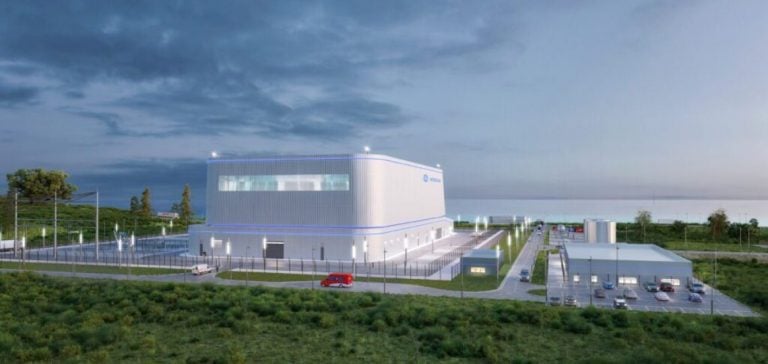The United Kingdom is pursuing its strategy to revive nuclear energy through the Great British Nuclear (GBN) competition, focusing on the development of small modular reactors (SMRs).
This initiative aims to secure the country’s energy supply while accelerating decarbonization.
GE Hitachi Nuclear Energy (GEH) is one of four finalists in this competition, which is now entering its decisive phase.
Competing companies will be able to submit bids for public contracts, further establishing this technology in the UK.
SMRs are seen as the answer to today’s energy challenges, combining low construction costs with operational flexibility.
Their modularity means they can be commissioned more quickly, and adapted to the specific needs of each region.
GE Hitachi’sBWRX-300 model, selected for this final phase, is based on proven technology with a generating capacity of 300 MW per unit, an asset for the UK’s transitional power grid.
A project already under development in Canada
One of the main advantages of the BWRX-300 is its practical application in Canada.
In collaboration with Ontario Power Generation (OPG), GE Hitachi is currently developing four units at the Darlington site near Toronto.
Initial preparatory work has been completed, and construction of the reactors is due to start in 2025, with commercial commissioning scheduled for 2029.
This Canadian project gives GE Hitachi a wealth of practical experience, strengthening its position in the UK competition.
The practical application of this technology in Canada demonstrates GE Hitachi’s ability to manage international projects and guarantee on-time delivery.
Local industrial support in the UK
To facilitate the implementation of its SMR project in the UK, GE Hitachi is relying on a strengthened local supply chain.
The company has recently signed several Memoranda of Understanding with major UK players such as Aecon, AtkinsRéalis, Jacobs and Laing O’Rourke.
These partnerships aim to ensure the availability of the local skills needed to support the construction of future reactors.
GE Hitachi has also initiated discussions with Sheffield Forgemasters, a British manufacturer of industrial components, to explore the local production of parts for the BWRX-300 reactor.
In addition, a conference dedicated to the SMR supply chain was organized by GE Hitachi in Sheffield, bringing together over 150 UK companies.
The event identified industrial needs and encouraged collaboration within the UK nuclear sector.
The strategic role of RMS in the energy transition
Small modular reactors are set to play a major role in the UK’s energy mix.
In addition to their ability to provide low-carbon energy, their flexibility enables them to adapt to regional energy needs and ensure grid stability.
Compared with traditional nuclear reactors, SMRs offer undeniable financial and technical advantages, with reduced construction times and optimized operating costs.
The UK government sees this technology as a way of reducing its dependence on fossil fuels, while at the same time securing its energy supply.
Against this backdrop, GE Hitachi is positioning itself as a key player in supporting the country’s energy transition with its BWRX-300 reactor, which is already being deployed in other international markets.
The challenges of the GBN competition
Despite GE Hitachi’s breakthrough in this competition, the road ahead remains full of pitfalls.
The four finalists have yet to demonstrate their ability to deliver SMR reactors that meet the UK government’s technical, regulatory and economic requirements.
The stakes are high: the UK is aiming to become a world leader in advanced nuclear technologies, and the company that wins this competition will benefit from privileged access to UK government contracts, with long-term development opportunities.
GE Hitachi’s involvement in this competition is part of a wider strategy to promote SMRs as a viable solution for the global energy transition.
By supporting local initiatives, building on proven technologies and cultivating industrial partnerships, GE Hitachi aims to strengthen its presence on international markets while contributing to the transformation of the UK energy sector.






















